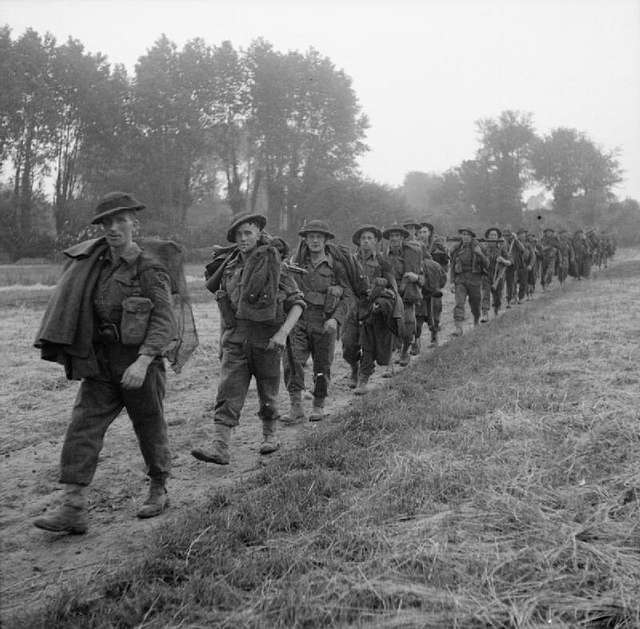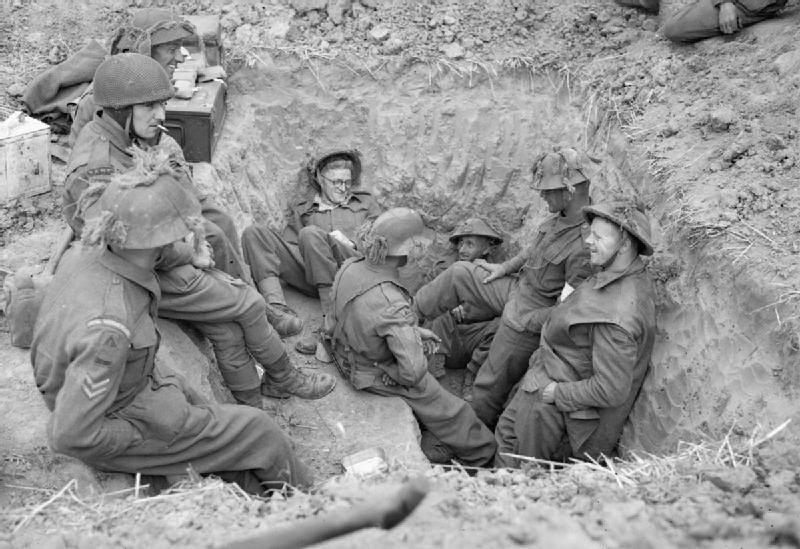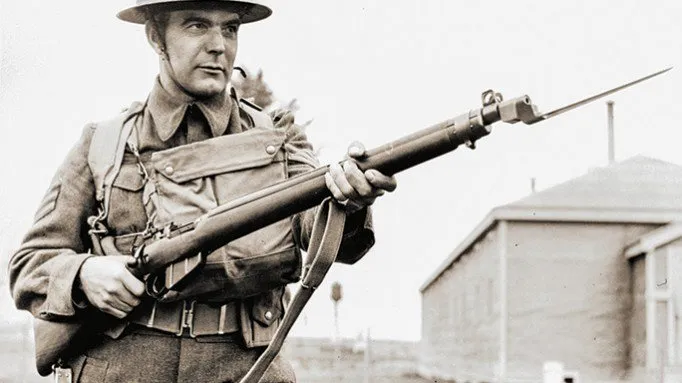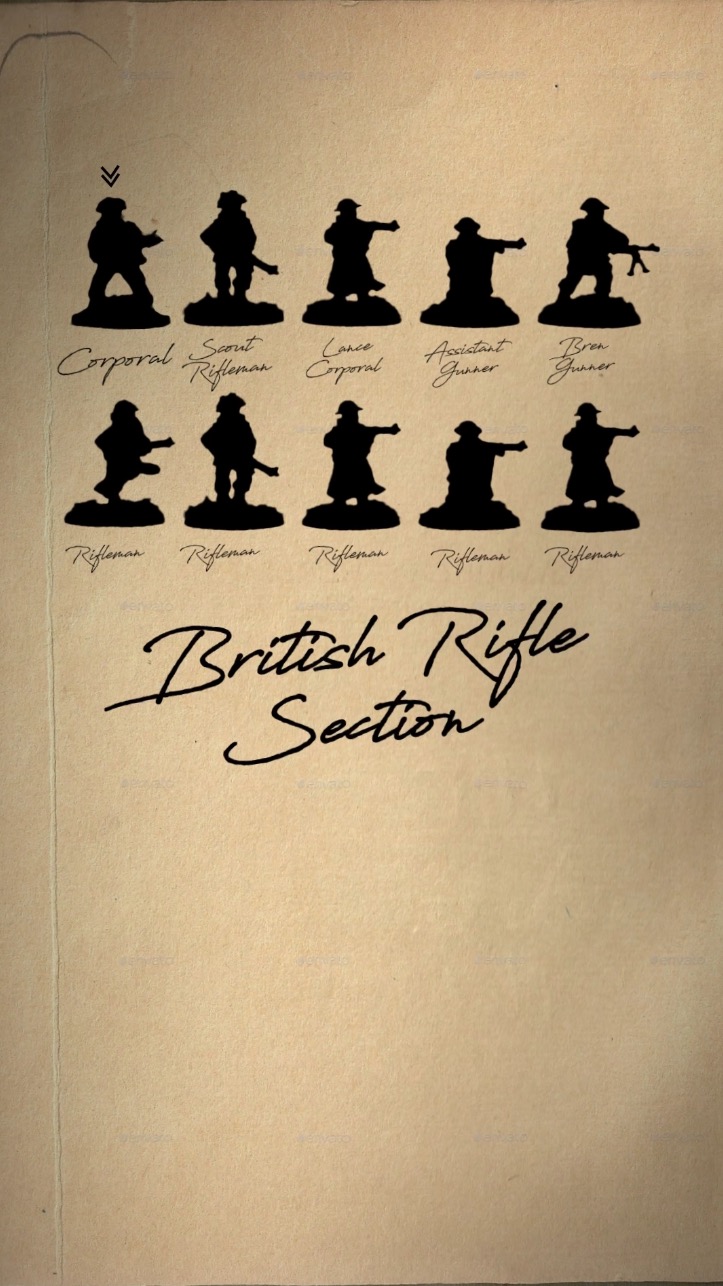In the crucible of World War Two, infantry sections were the backbone of every army’s ground forces. The British Army, renowned for its disciplined infantry, relied on well-organized and highly efficient units.
One of the fundamental components of the British infantry was the rifle section. In this blog post, we will delve into the layout and composition of a British infantry rifle section during World War II, exploring the roles of each member and their collective impact on the battlefield.


Composition of a British Infantry Rifle Section
- Section Leader:
- The section leader was usually a Corporal, a non-commissioned officer (NCO) responsible for the overall command and coordination of the section.
- They provided instructions, ensured the section followed the battle plan, and made quick decisions based on the evolving battlefield situation.

- Bren Gun Group:
- The Bren gun group consisted of the Bren gunner and his assistant.
- The Bren gunner carried the iconic Bren light machine gun, a versatile and reliable weapon used for suppressing enemy positions and providing covering fire for advancing troops.
- The assistant helped carry extra ammunition and provided support to the Bren gunner during firefights.

- Rifle Group:
- The rifle group was composed of riflemen armed with Lee-Enfield rifles, the standard infantry weapon of the British Army.
- These soldiers were the primary infantry force, engaging enemy troops with accurate rifle fire and advancing under the cover of the Bren gun group.

Tactics and Coordination
The success of a British infantry rifle section in WWII depended on effective communication, well-coordinated movements, and precise tactics. Sections were trained to advance under covering fire, utilizing the suppression provided by the Bren gunner to maneuver and gain ground. The riflemen would use their Lee-Enfield rifles to engage enemy troops from a distance, providing a steady stream of accurate fire.
The section leader played a pivotal role in directing the group’s movements, ensuring the Bren gun provided continuous covering fire while the riflemen advanced or took cover. The anti-tank group remained vigilant, ready to neutralize armored threats, and the grenade discharger provided additional firepower when assaulting fortified positions.
Conclusion
The layout of a British infantry rifle section in World War II exemplified the careful organization and strategic thinking of the British Army. Each member had a specific role, and their collective efforts were vital to the success of ground operations. The disciplined coordination, combined with the effectiveness of the section’s weaponry, made them a formidable force on the battlefield, demonstrating the importance of a well-structured infantry in the midst of global conflict.

